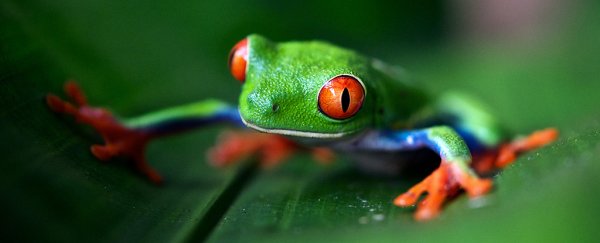Putting together a list of all the creatures great and small on the face of the Earth is no small task, but scientists have now put a plan together for how this daunting challenge might be successfully met.
The potential solution outlines 10 key principles to be followed by list-makers, together with an agreed set of rules about classifications and crediting. Right now, several competing lists are in circulation, while some species aren't covered by a list at all.
That makes it hard for scientists, government agencies, conservationists, and other organisations to keep tabs on what's happening to the wildlife of our world. From studying biodiversity to protecting endangered species, an authoritative list would be massively helpful.
"Listing all species may sound routine, but is a difficult and complex task," says environmental scientist Stephen Garnett from Charles Darwin University in Australia. "Currently no single, agreed list of species is available."
One factor in the researchers' favour is that the world is connected like never before (as you might have noticed if you've had to take part in more video group calls than normal in recent weeks). Information can be easily shared and assessed across countries and continents in an instant.
Yet there's still a lot of discussion and debate about what kind of criteria should be used for listing species on such a unified list.
The 10 principles outlined by researchers specify that the list must be based on science, must support the scientific community's needs, be decided on with transparency, kept separate from decisions on taxonomy, and built in such a way as to not constrain academic freedom.
This ultimate species list must also aim for as much taxonomic consistency as possible, keep records of its archived versions, be built by recognised and qualified contributors, have entries that are traceable to their source, and consider both global diversity and local knowledge at the same time. No pressure, then.
"Importantly, [the plan] clearly defines the roles of taxonomists – the scientists who discover, name, and classify species – and stakeholders such as conservationists and government and international agencies," says plant biologist Kevin Thiele from the Australian Academy of Science.
"While taxonomists would have the final say on how to recognise and name species, the process ensures that stakeholders' needs are considered when deciding between differing taxonomic opinions."
A species having its name on a list matters – just like it matters who is on a school register or a guest list for a music gig. Creatures that are missed or miscategorised are likely to miss out, which is why there's now a push to put together a definitive catalogue of all the life on our planet.
Debates on species definition are inevitable, the researchers admit, as nature is constantly evolving. As one of the team puts it, it's a little like trying to define who counts as your family and who doesn't – distant cousins, long-lost aunts and so on. Everyone's answer is going to be different.
However, the researchers hope their new guidelines will enable debates to be overseen properly while an authoritative list is drawn up. That in turn should make the job of managing and conserving species easier for scientists, in a world that's growing increasingly difficult to survive in.
"Developing a single, agreed list of species won't halt extinction," says Garnett. "But it's an important step in managing and conserving all the world's species, great and small, for this and future generations."
The research has been published in PLOS Biology.
